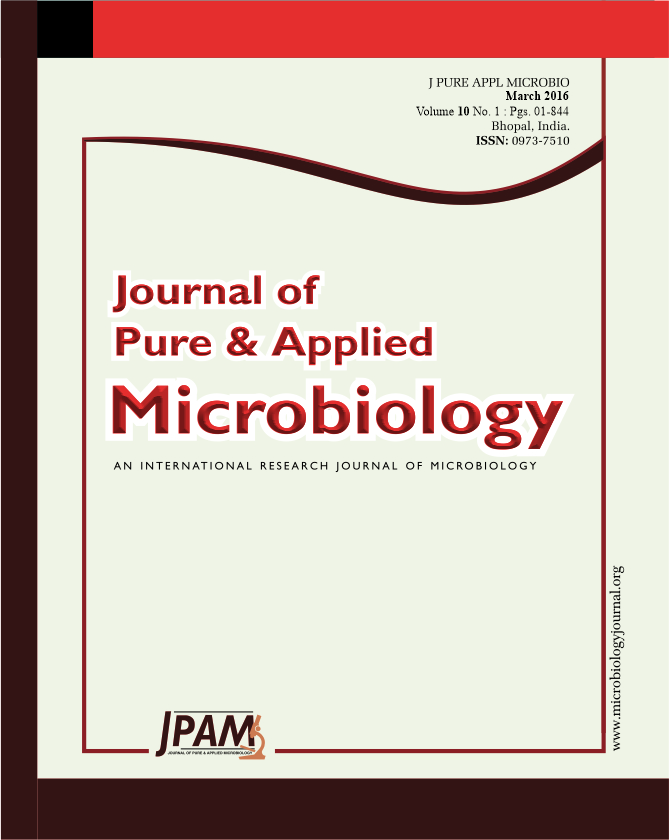The production of one or more antibiotics is the mechanism most commonly associated with the ability of fluorescent pseudomonads to act as antagonistic agents against plant pathogenic fungi. Pseudomonas fluorescens strains were tested for antifungal activity against Pythium aphanidermatum that is known to attack turmeric crops. P. fluorescens produce antibiotics such as phenazine 1- carboxylic acid, 2, 4-diacetylphloroglucinol, pyoluteorin and pyrrolnitrin. Production of antibiotic compounds were assayed by Thin Layer Chromatography (TLC). The antifungal compounds of DAPG, phenazine and pyoluteorin were identified on TLC at Rf value of 0.88, 0.57 and 0.05 respectively. All the antibiotics extracted from different strains of P. fluorescens were tested for their antifungal activity against P. aphanidermatum. Among the strains, the antibiotics extracted from strain FP7 effectively inhibited the mycelial growth of P. aphanidermatum in agar well diffusion assay.
Pseudomonas fluorescens, Thin Layer Chromatography, Antifungal compounds.
© The Author(s) 2016. Open Access. This article is distributed under the terms of the Creative Commons Attribution 4.0 International License which permits unrestricted use, sharing, distribution, and reproduction in any medium, provided you give appropriate credit to the original author(s) and the source, provide a link to the Creative Commons license, and indicate if changes were made.


